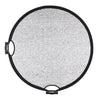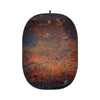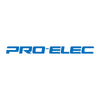Why Does Some Audio Equipment Use 1.9GHz in 2024?
Did you know that some audio equipment, such as the SOLIDCOM C1 PRO by Hollyland, still uses the 1.9 GHz frequency band in 2024? You're probably thinking “Why not 5 GHz, isn’t that the newest technology? Why use an outdated Wi-Fi band?” Well, it turns out, there’s a few pretty good reasons behind using a slower, almost obsolete frequency band, in audio equipment, specifically. Today, we’re looking at why this frequency has become a go-to choice for wireless audio equipment, and why you may want to consider switching to 1.9 GHz on your audio equipment, if it's available.
The 1.9 GHz frequency band is commonly used for some audio products, particularly in wireless microphone systems and wireless intercoms, because it’s part of the DECT (Digital Enhanced Cordless Telecommunications) band. This frequency offers several benefits for audio use. Let's take a look at some benefits of using the DECT band.

What Makes 1.9 GHz So Good For Audio Equipment?
Interference Resistance: The 1.9 GHz band is relatively free from interference, compared to more crowded frequencies like 2.4 GHz (used by Wi-Fi and Bluetooth devices). This helps reduce signal drops or interference from other wireless devices.
Regulated Frequency: In many countries, the 1.9 GHz band is reserved specifically for DECT devices, which makes it less likely to overlap with other radio frequencies and ensures clearer, more consistent audio transmission.
High-Quality Audio: Since the 1.9 GHz band allows for digital transmission, products that use it can offer high-quality, low-latency audio, which is crucial for professional applications where timing and clarity are key.
Longer Range: DECT-based systems operating at 1.9 GHz often have a longer effective range, allowing better audio performance in large spaces or crowded environments.
Battery Efficiency: 1.9 GHz audio systems are typically designed to be efficient, resulting in longer battery life, which is beneficial for wireless microphones and similar devices that need to operate for extended periods.

Summary
In short, the 1.9 GHz band provides reliable, high-quality transmission for audio products with minimal interference, making it ideal for professional and demanding applications. However, while 1.9 GHz has its advantages, especially for high-quality audio and interference management, it’s best suited for environments with moderate obstacles rather than heavy barriers.
Overall, we recommend assessing your work environment(s) carefully, prior to making any purchases, to choose the equipment best suited to your needs.
We hope the information provided today helps you make an informed decision!
Interested in any video or audio equipment? Check out our new collections on our website where you can purchase equipment from your favourite brands, with the benefit of EssentialPhoto & Video's excellent customer service and warranty policies to cover your valuable equipment from all kinds of damage & faults!
Simply head over to our website https://www.essentialphoto.co.uk and click on the "other brands" section on the navigation bar to view all the brands we are partnered with and officially distribute products from the U.K. for!














































































































































































































































































